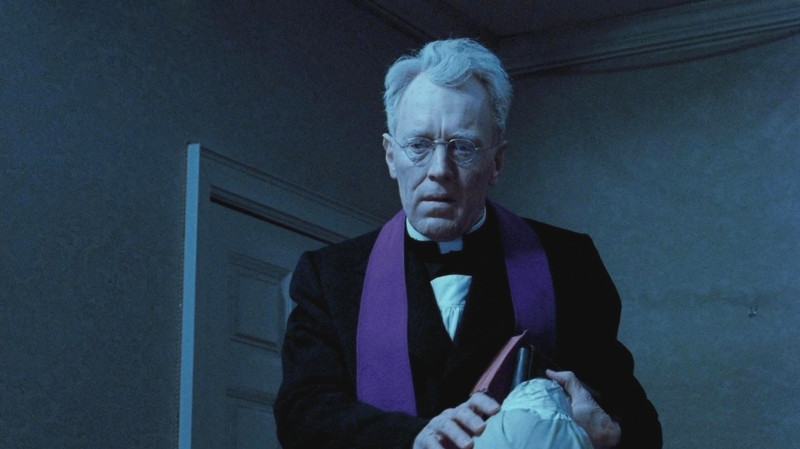
Carl Adolf von Sydow was born on April 10, 1929, in the southern Swedish town of Lund. Young Carl was infected with the acting bug when, at age 15, he attended a performance of William Shakespeare’s “A Midsummer Night’s Dream” at the then newly opened Malmö City Theatre. Inspired by this experience, he started an amateur theater company with friends and staged several plays.
After completing his military service, where he adopted the name “Max” after a flea in a flea circus, von Sydow attended the Royal Dramatic Theatre’s acting school from 1948 to 1951.
After graduation, von Sydow worked on a number of Swedish films and acted at numerous theaters. It was at this time that he was introduced to Ingmar Bergman, who would ask von Sydow to join the Malmö City Theatre acting company. They worked there together until 1960, with von Sydow acting in both supporting and lead roles in Bergman’s winter stage performances and summer films.
While clearly developing his theatrical skills with Bergman, it was the arrival of television and method acting that influenced his move into more films and less theater, thereafter eschewing the more stylized dialogue prominent in Bergman’s scripts (e.g. “The Seventh Seal”).
His transition to American movies in the 1960s was not a particularly happy one, starting off as Jesus in the rather dreary “The Greatest Story Ever Told”, which he had been reluctant to do but was nagged into submission.
The film went against all he had learned from Bergman regarding how to play classical parts. His distinctive voice led him to be frequently (type-)cast as either a bad guy, or more often, a religious figure, the latter of which he found particularly boring (the obvious exception being his role as Father Merrin in “The Exorcist”, a film von Sydow actually enjoyed making).
Directors such as David Lynch and Martin Scorsese have utilized the gravitas, even menace, that von Sydow brings to the screen in “Dune” and “Shutter Island”, respectively.
Von Sydow went on to act in more films than plays, and worked on an international front more than in Sweden. In Hollywood, he regularly played one-dimensional outsiders, especially during the 1960s and 1970s. During the mid-1960s, he signed a contract with 20th Century Fox to make seven films in seven years.
Because of his inability at that time to play a convincing American, he more often than not played the role of the strange foreigner (with the exception of George Roy Hill’s “Hawaii”). His most popular roles during his first 10 years as an international film star were in William Friedkin’s “The Exorcist” and Sydney Pollack’s “Three Days of the Condor”.
This list divides von Sydow’s films into the best of the Bergman era, and those that are post-Bergman. Yet, a tribute to Max von Sydow must begin with his theatrical roots in Sweden.
Swedish Origins (Bergman)
1. The Seventh Seal (1957)
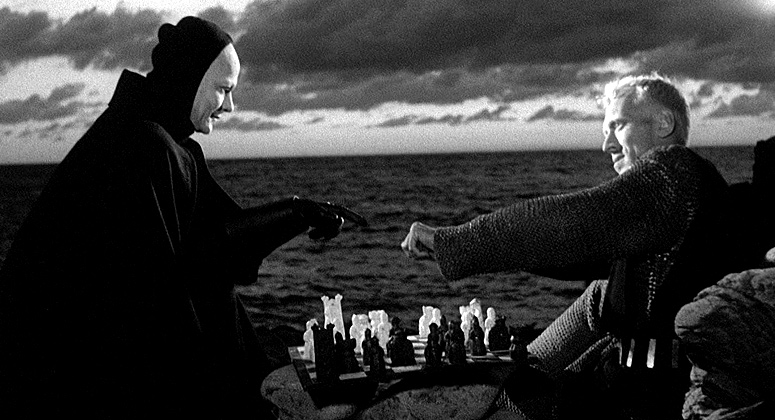
The remoteness of God is very much the central theme of “The Seventh Seal”, perhaps the best-known of Bergman’s films. Rather than being dull and self-important, though, the film is an exhilarating if allegorical look at the struggle between faith and reason.
A world-weary knight, Antonius Block (von Sydow), returns from the crusades with his squire to a land ravaged by the plague. He pauses on a rocky beach to rest, and here, he meets Death and challenges him to a game of chess. If the Knight wins, then Death must let him go free. And so begins Bergman’s classic. It’s a fantastic setup featuring iconic imagery that has been paid homage to and parodied in countless films since.
As the story continues, the knight, journeying home, continues the game of chess when he stops to rest. Along the way, he meets a troupe of actors that includes a young couple named Mia and Jof (Swedish for Mary and Joseph), two easygoing sorts whose deepest discussions revolve around their infant child’s future in the troupe.
He picks up a few other strays along the way as well, including a witch set to be burned at the stake and a group of religious flagellants. Overall, the film is a dark look at the human race when they are living under the shadow of constant death.
Bergman, the son of a strict Lutheran minister, was concerned with questions of God and his absence from men’s lives, and that is a central theme in this movie. Antonius is a man seeking answers. He longs to know that God exists. He goes to confession and tells the priest (who is actually Death in disguise), “I want to confess as best I can, but my heart is void. The void is a mirror. I see my face and feel loathing and horror. My indifference to men has shut me out. I live now in a world of ghosts, a prisoner in my dreams.”
And later he says, summing up the film’s central theme, “Faith is a torment. It is like loving someone who is out there in the darkness but never appears, no matter how loudly you call.” Even the existence of the personification of Death offers Antonius no solace, as Death informs him that he knows nothing of God.
At the center of these complexities is the revelatory performance by von Sydow, who at age 28 seemed much older and seasoned than most of his counterparts. If any one performance of von Sydow’s earliest endeavors carries the distinction of fueling the prolific career that would follow, then “The Seventh Seal” shows him at his most pointed and vulnerable.
Often in Bergman’s films, it is less about what characters say and more about the looks they exchange, and where most actors might gaze up at the visage of Death with horror, here it is conveyed with an underlying sense of wonder, and the effect is perhaps numbed by the perception of Antonius already seeing so much death and decay through circumstance.
It is clear that the experience of the crusades has shaken him so much that, once the chess game begins, he is already deadened by the idea of God hiding in a “fog of half spoken promises.”
2. Through the Glass Darkly (1961)
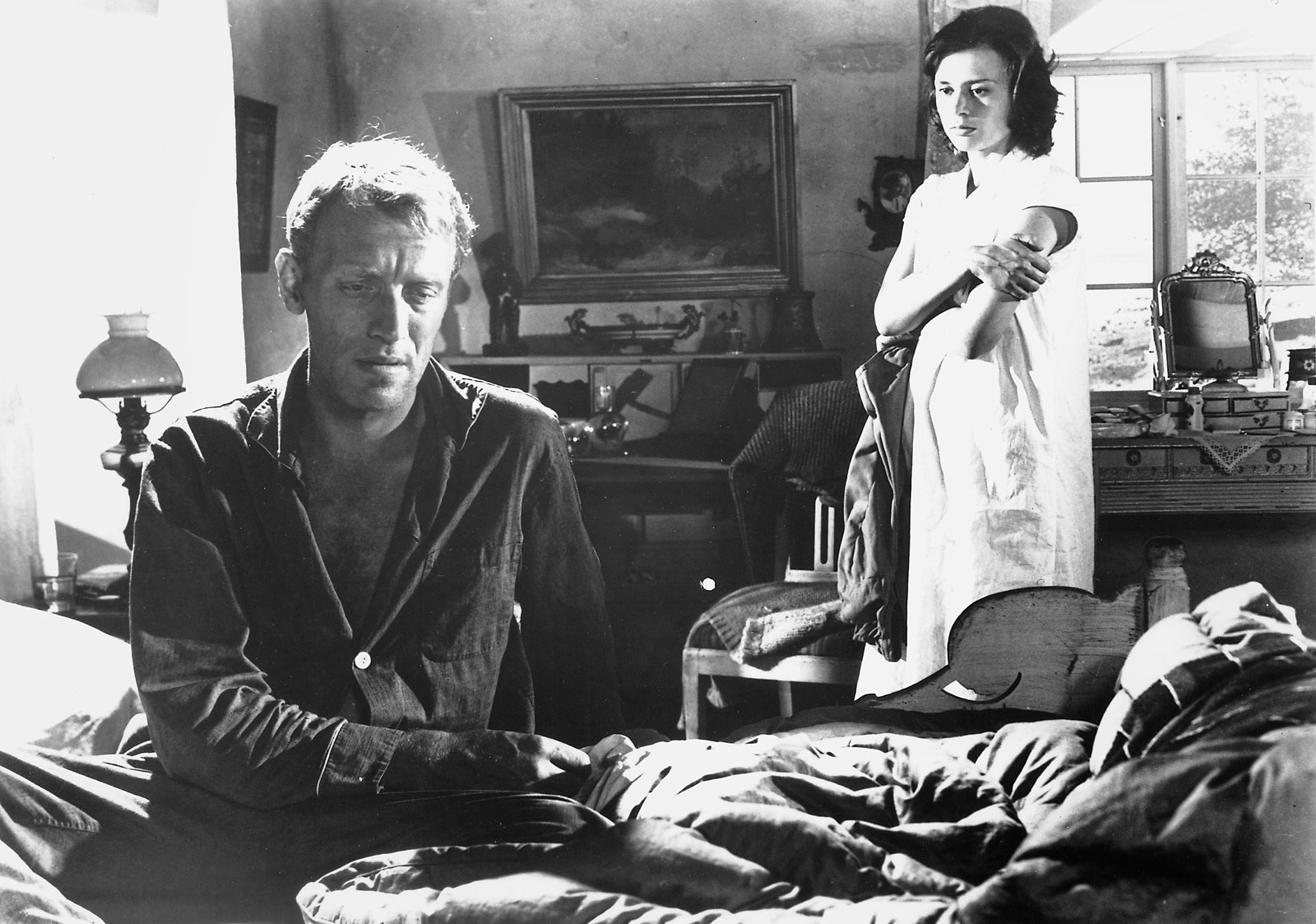
“Through a Glass Darkly” is one of the best and certainly the ripest of Bergman’s creations, as a film as subtle as “Wild Strawberries” but more solid in substance – the first film in which Bergman creates a hero who can love, and characters for whom the spectator cannot help but care.
The film tells the story of a father, his daughter and son, and the daughter’s husband, isolated on a remote Swedish island for a summer vacation, living in a run-down cottage. The opening scenes are deliberately banal, as they emerge from a dip in the sea and debate about who will fix dinner and who will put out the nets, but deeper currents emerge. We hear about the “sickness” of the daughter, Karin (Harriet Andersson).
It is never named, but is clearly schizophrenia. She has been treated and is going through a period of recovery. Her husband, Martin (von Sydow), loves her but feels powerless to help her. Her brother, nicknamed Minus (Lars Passgard), is balanced at the entry to adolescent sexuality, and is very aware of the physical reality of his sister. The father, David (Gunnar Bjornstrand), is a highly-regarded author who has just returned from a stay in Switzerland. He is cool and distant.
“Through a Glass Darkly” would be followed by “Winter Light”, about a minister who despairs of God’s silence, and then by “The Silence”, about two sisters and the child of one who are stranded in a strange town and haunted by old hatreds and wounds. Long stretches of that film are silent, or at least lacking in dialogue, as the boy prowls a hotel’s corridors, making fantasies of his own to displace the disturbance of being trapped between the two sisters.
In all of these films, one is struck by Bergman’s deep concern that humans see the world as through a glass, darkly, and are unable to perceive its meaning (a metaphor of St. Augustine’s conception of God as only through a dark glass).
The trilogy appeared to be Bergman’s way of unloading the “baggage” of his religious upbringing. Bergman still has a great deal of that upbringing left over for his other films, which often deal with mortality, guilt, sin, God, and demons, but in these three, there is an almost painfully intense focus on those themes.
It is almost superfluous to note that the film is beautifully made; it is visually exquisite, and ingeniously knit. Harriet Andersson’s performance as the deranged girl is stark, beleaguered, and volatile; she seems at the end to virtually exude an odor of bad health and agony.
Gunnar Bjornstrand, her father, adds to the glacial element of the son in “Wild Strawberries” a malaise that gives the novelist greater richness and makes the cold elements themselves more affecting. Von Sydow shows further versatility as the patient husband. Even in the way he runs, he delineates character – as unlike the Knight in “The Seventh Seal” as are the two centuries.
3. Virgin Spring (1960)
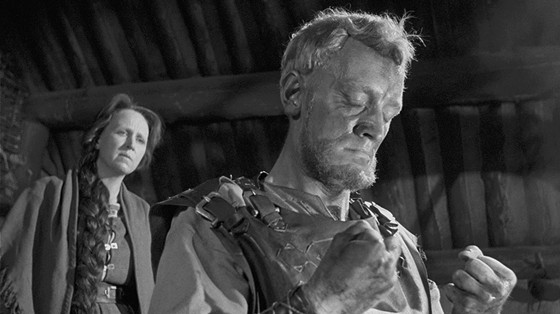
When Karin (Birgitta Pettersson), a devout young girl in 14th century Sweden, is raped and killed by a band of lawless herdsmen, her deeply religious parents find their most sacred beliefs challenged. Her father (von Sydow) is consumed by a thirst for justice and a violent need for vengeance in a society that is conflicted by the clash of Christianity and ancient mysticism.
“The Virgin Spring” unites Bergman with von Sydow as well as the brilliant cinematographer Sven Nykvist. A fugue about various aspects of guilt from innocence to rape, murder, and revenge, the film, written by Ulla Isaksson and based on an ancient ballad, echoes with the themes Bergman explored in “The Seventh Seal”. “The Virgin Spring” provides a more naturalistic conflict about God’s willingness to countenance the existence of evil. Here in 14th century Sweden, it is a struggle between the Christian edict “turn the other cheek” and the more primitive laws of “an eye for an eye.”
The film’s visual power takes us back to the Middle Ages with unsettling veracity. Bergman’s instinctive approach to filmmaking – like his gripping use of long wordless moments filled with pictures of great power – is in evidence, with some unforgettable scenes that even today, over 50 years later, have a fresh impact. The setting, the images and symbols, the characters, and the storytelling all stand out in this potent piece of cinema.
It is an austere film that leaves a feeling of some hope at the end, as the religious couple witnesses a miracle and their renewed Christian belief gives them the possibility of redemption, while the stepdaughter is torn over her guilt and will have to live with her sins for the rest of her life.
The film is coldly intellectual and the violence lingers even though it was not graphic, as it has an unpleasant chilling effect because no warmth ever comes forth to rescue it from its heavy metaphorical (light and dark) messages, even though it is pleasing as a thoughtful film.
4. The Passion of Anna (1970)
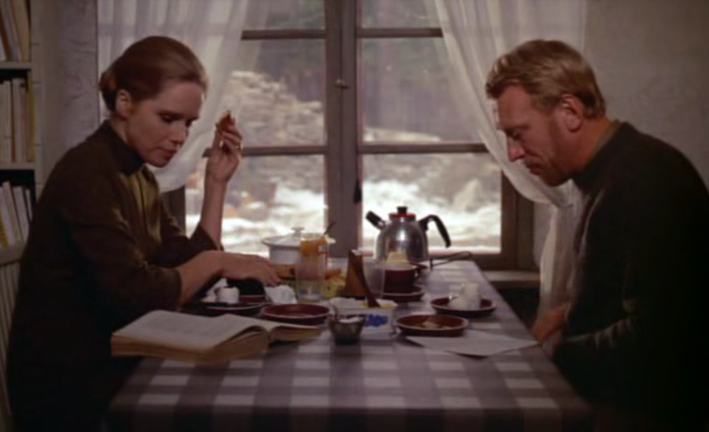
Andreas Winkelman (von Sydow) is repairing the roof of the cottage in which he lives as a literate hermit. At one point, he stares off at the sun that hangs low and dim – with its edges made ragged by a telephoto lens – in the Scandinavian sky. Suddenly the sun disappears into the gray-blue haze, but it is as if Andreas had willed it invisible, much as he has tried to will himself invisible without taking the ultimate step.
With this lovely image, Bergman begins “The Passion of Anna”, which is the concluding film in the “island” trilogy that includes “Hour of the Wolf” and “Shame”. As in “Hour of the Wolf”, the von Sydow-Bergman character is again pursued by demons, but they are real this time – demons of pride, loneliness, and defeat. As in “Shame”, he is again framed against a world of war and violence.
Andreas is a book-reading ex-con, imprisoned as a check forger, who lives as a peaceful loner on this barren island after his wife left him (the only thing we know of this marriage is that she told him the reason she was leaving him was because he had “cancer of the soul . . . you have tumors all over you”). He has no visible means of support, but seems happily resigned to live a quiet life of solitude. One day, his crippled widowed neighbor Anna Fromm (Liv Ullmann) asks him if she can use his phone.
When Anna leaves her purse behind, Andreas cannot resist reading a letter from her husband attempting to end a marriage that has gone sour. In any case, the chance encounter leads to a live-in relationship for a year and brings him into contact with her best friends, the compromised middle-class married couple of the insecure but attractive Eva and the cocky Elis Vergerus (Bibi Andersson and Erland Josephson).
The financially successful Elis is an architect who takes an indifferent view to the world’s suffering, and has accepted his pretty and vulnerable wife’s fling with Anna’s late husband as one of those things in life. Elis offers Andreas employment and a guarded friendship, while Eva offers Andreas her body.
Life on the island moves along with domestic bliss for Andreas, who tries to make the relationship work despite a few minor spats. Anna hides behind the belief that she has always led a truthful life and speaks of her former marriage as if it were an ideal one. Andreas never contradicts her, but their happiness bubble will burst when Anna is revealed as a twisted woman (filled with lies, a judgmental Christian self-righteousness, and a history of mental instability) who, when she couldn’t handle her husband leaving her, drove erratically in a crazed fit on an icy road and skidded into a ditch, killing her son and husband and leaving her with a limp and revisionist memories.
The same cycle is repeating in this relationship, until Andreas retreats to his old solitary way of life after he’s challenged by a zealous Anna waxing poetic about her virtues while flaunting his more elusive ways.
“The Passion of Anna” is one of Bergman’s most beautiful films (it is his second in color and the last project with von Sydow), all tawny, with wintry grays and browns, deep blacks, and dark greens, highlighted occasionally by splashes of red, sometimes blood.
It is also, on the surface, one of his most lucid, if a film that tries to dramatize spiritual exhaustion can be really considered lucid. It is a film about the impossibility of purity and consistency in a world where to live is to contradict yourself. The passion of the title is not sexual, but the ability to live with the contradictions of life and to bear them without resignation.